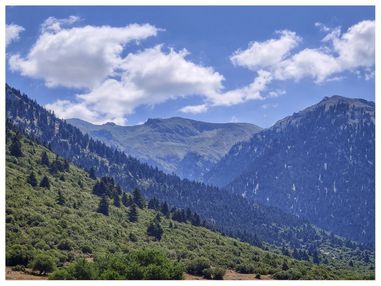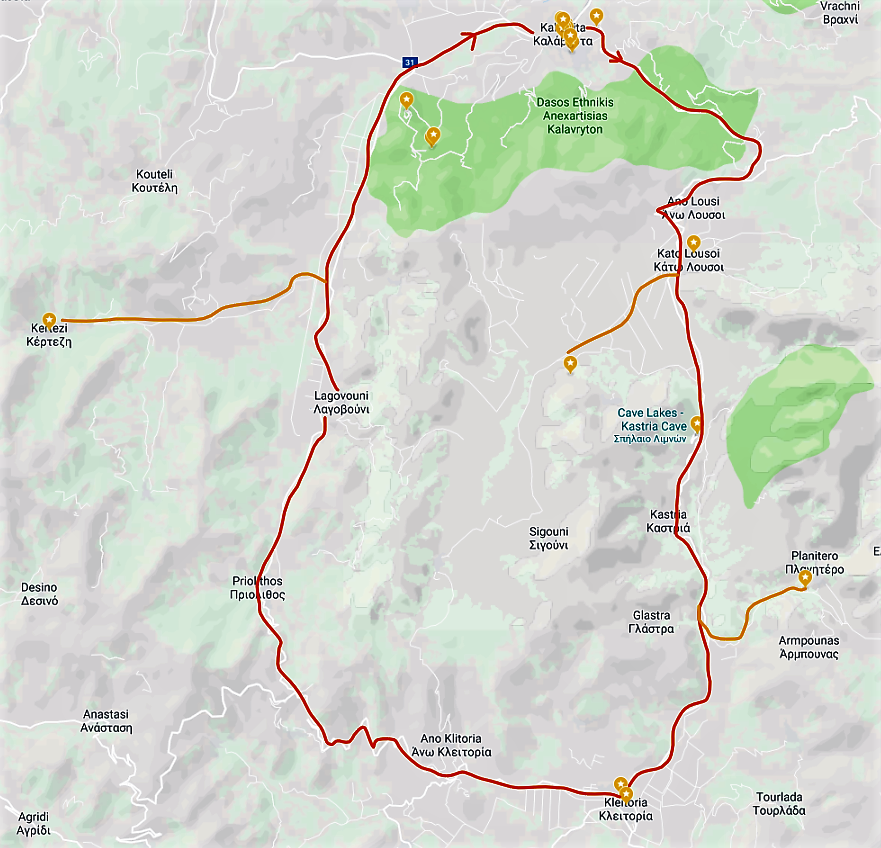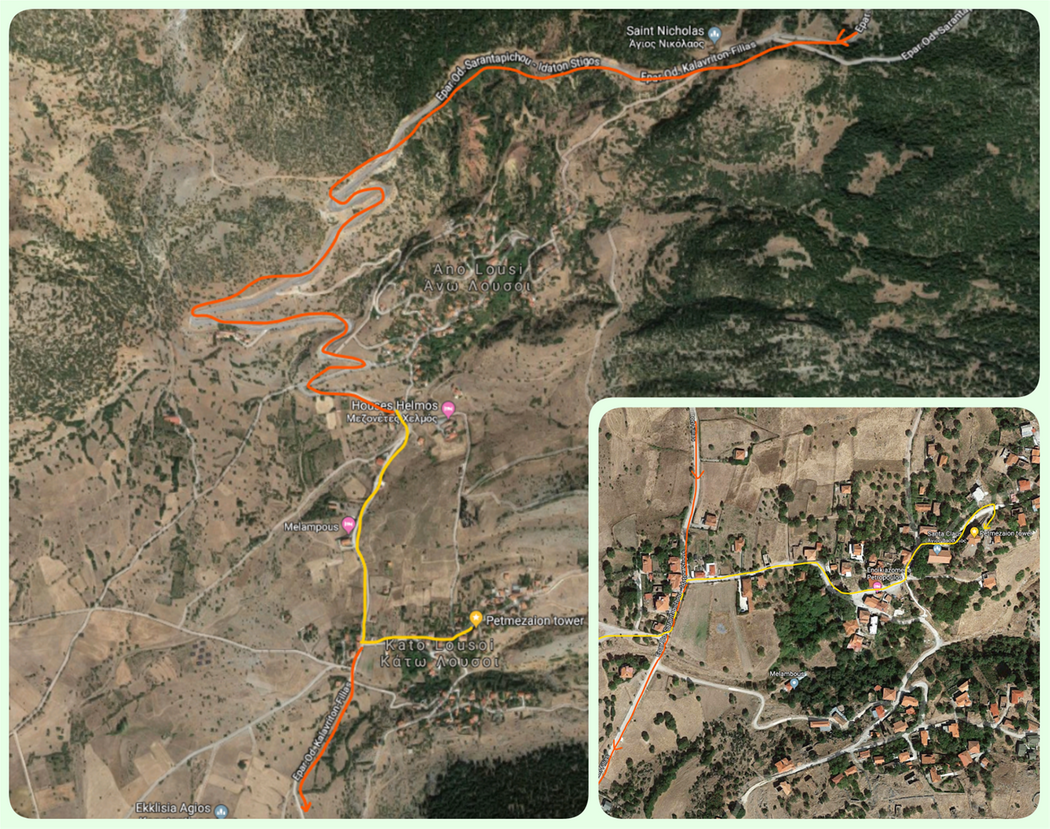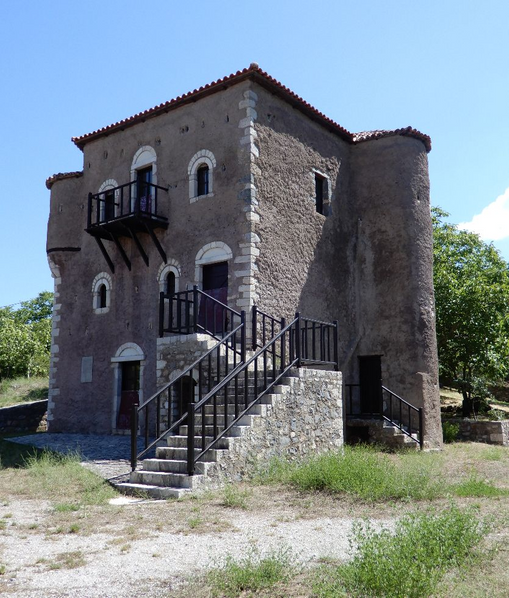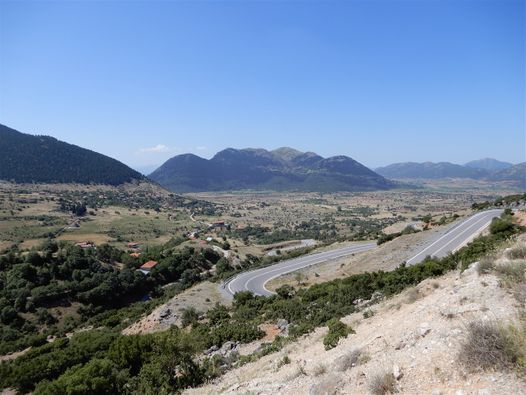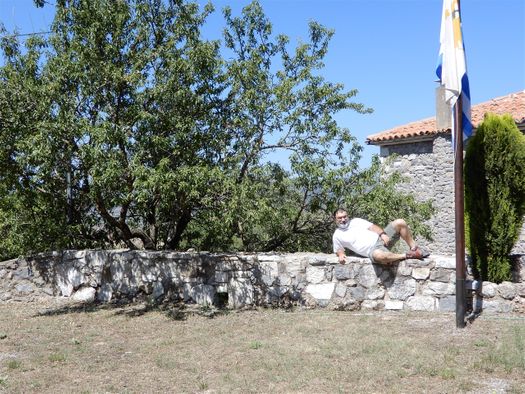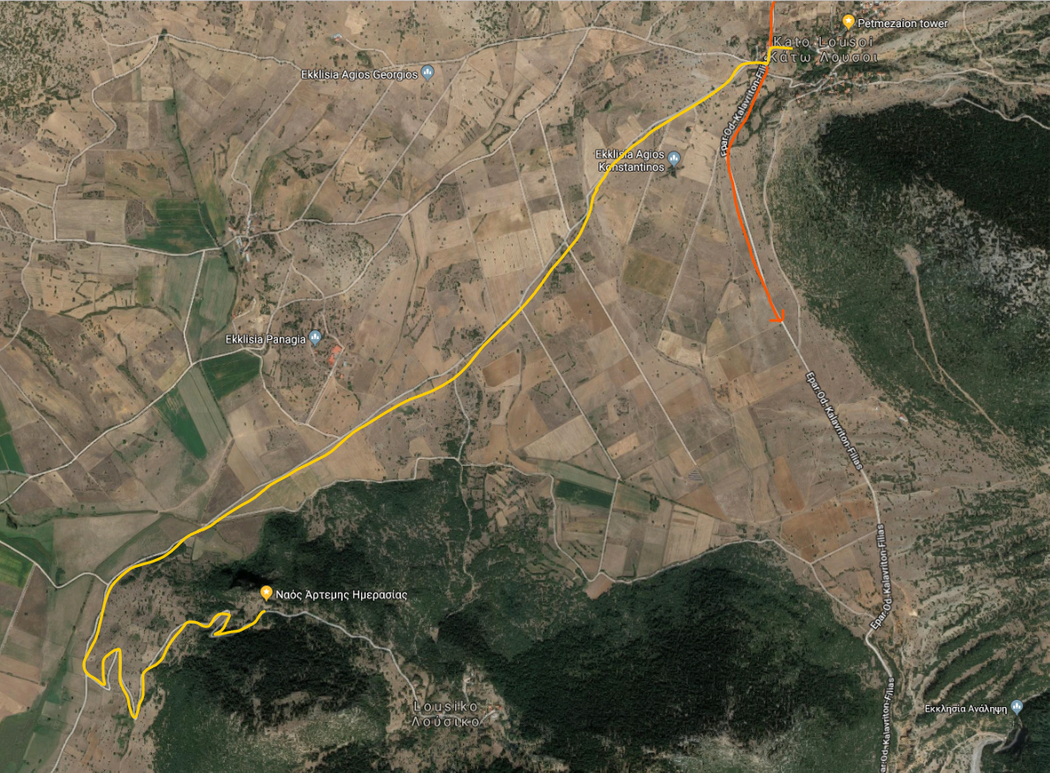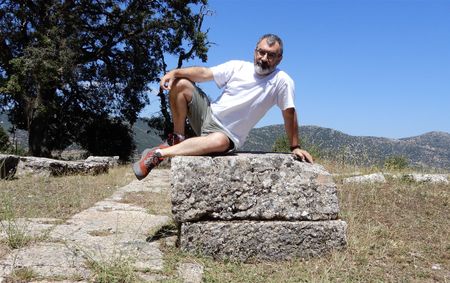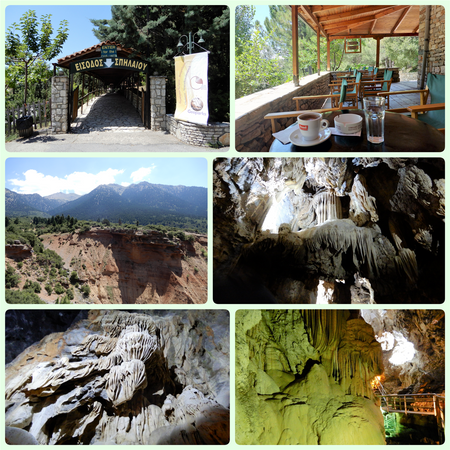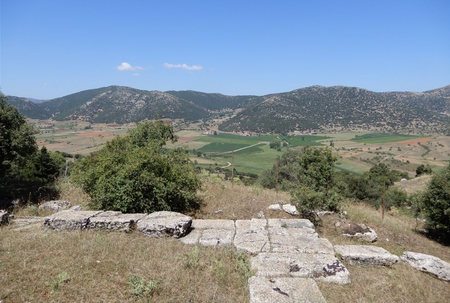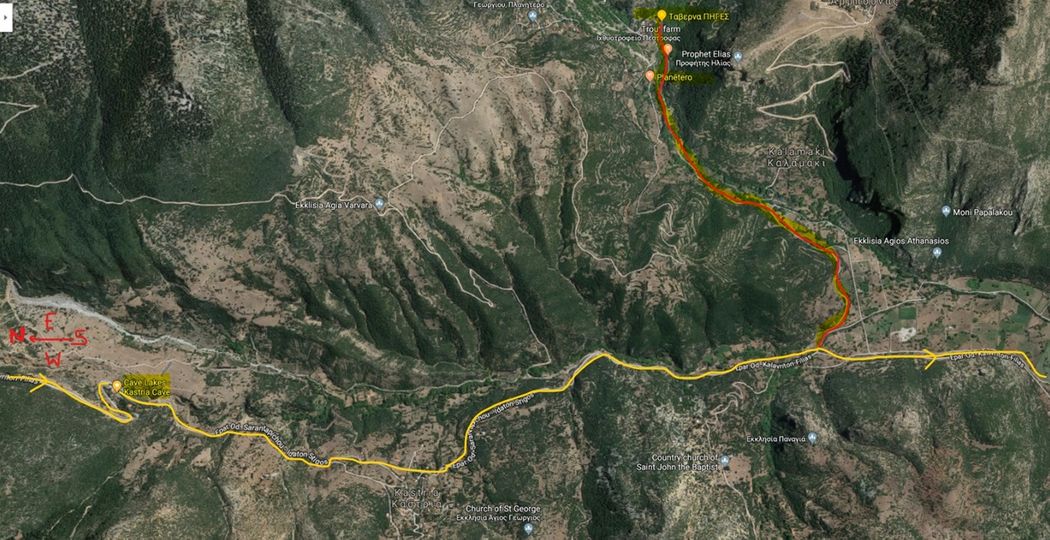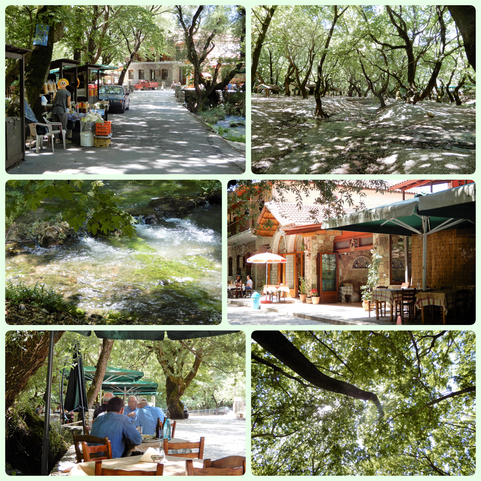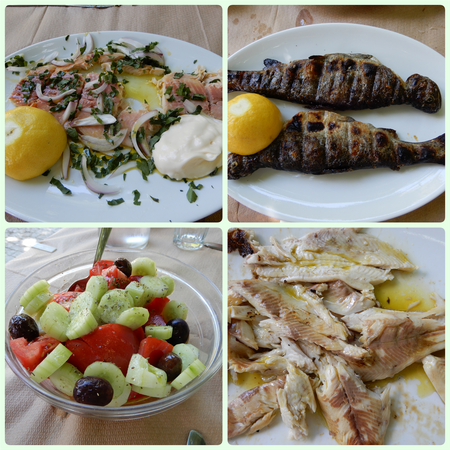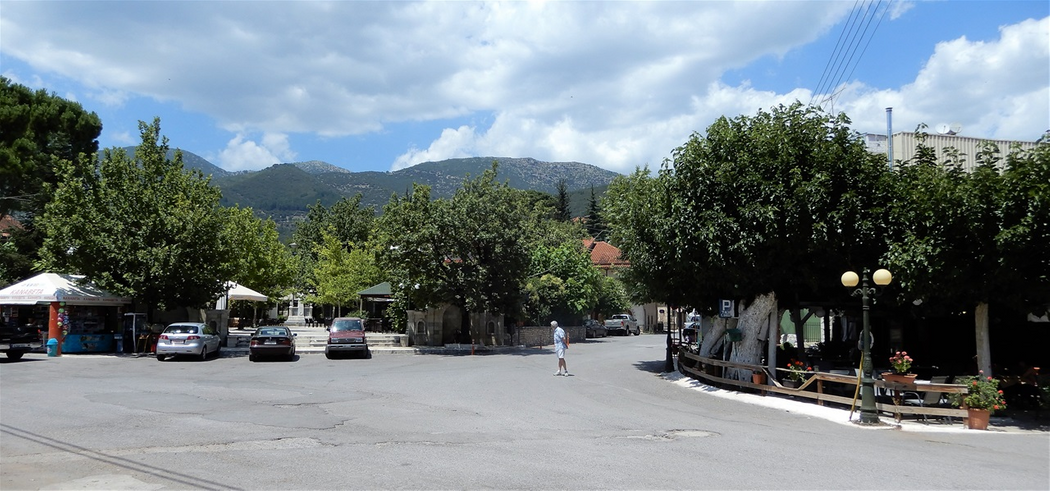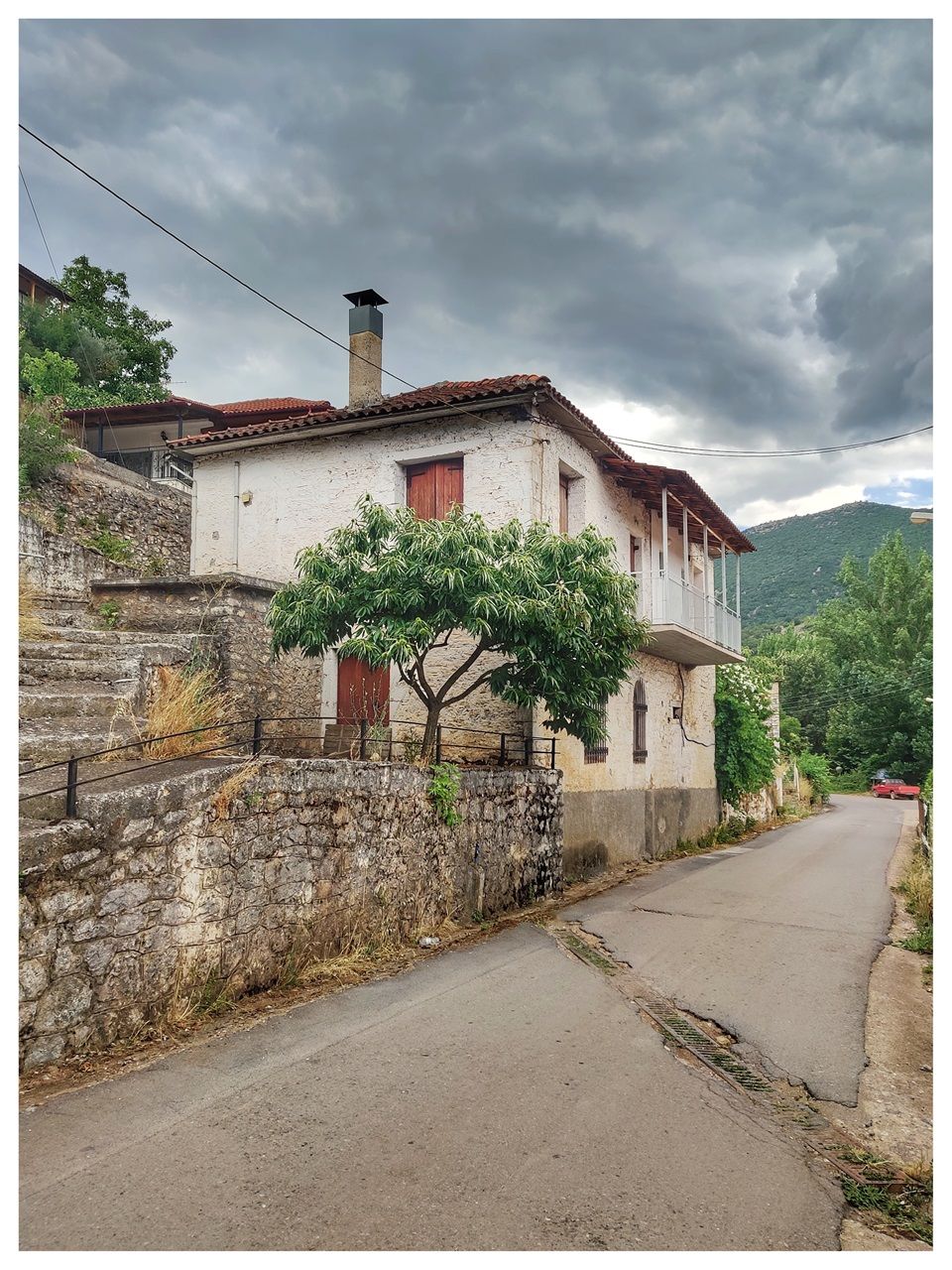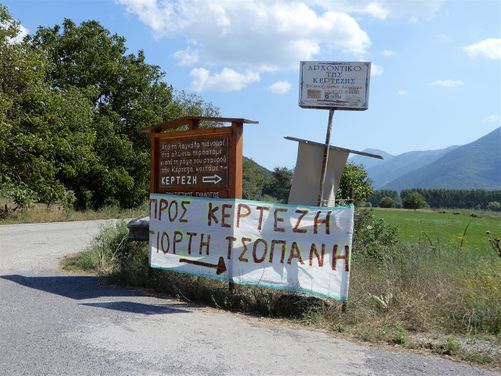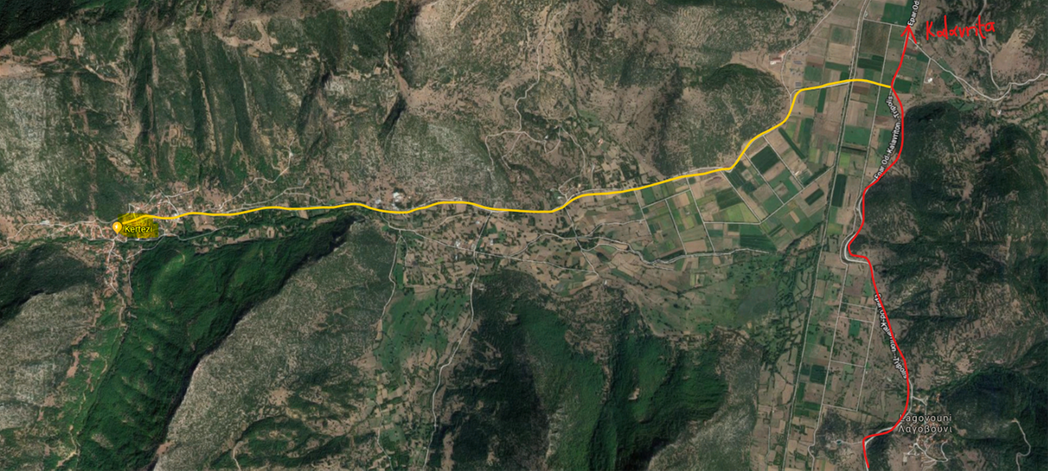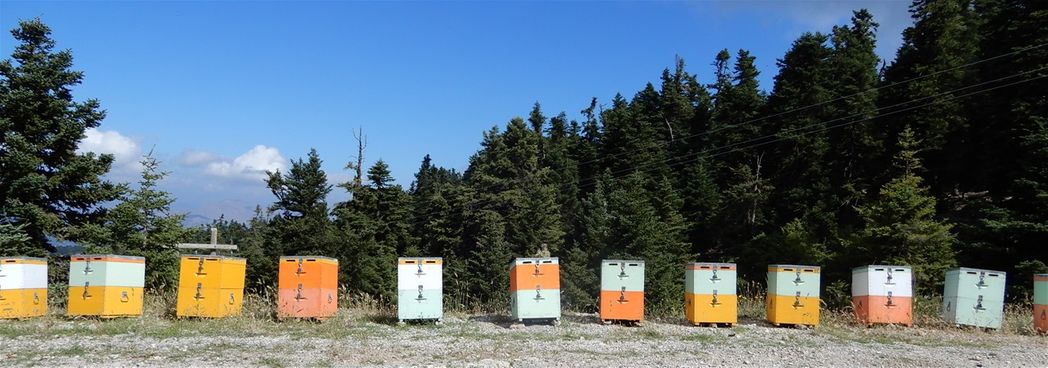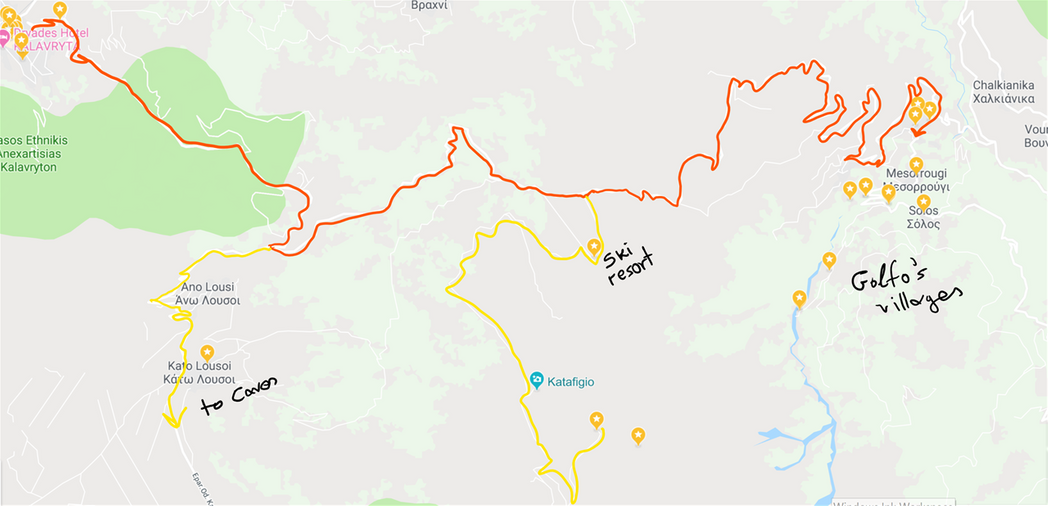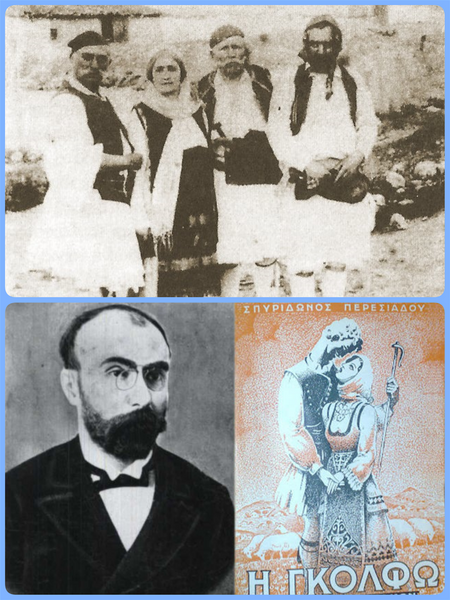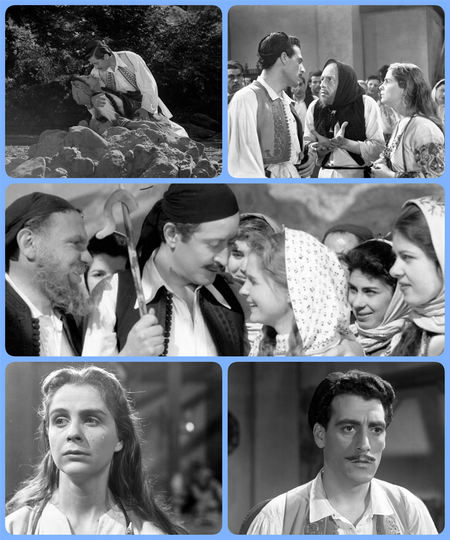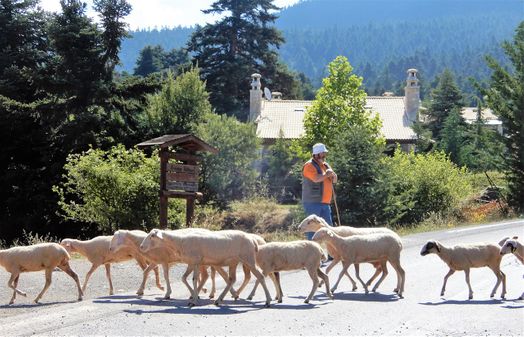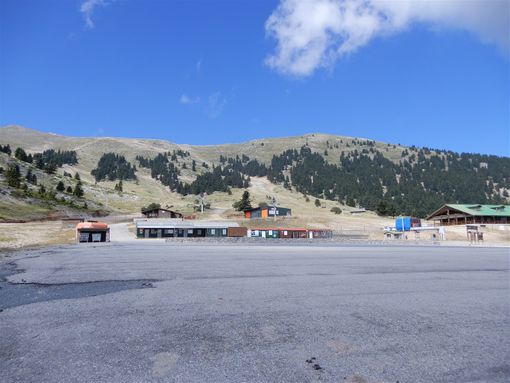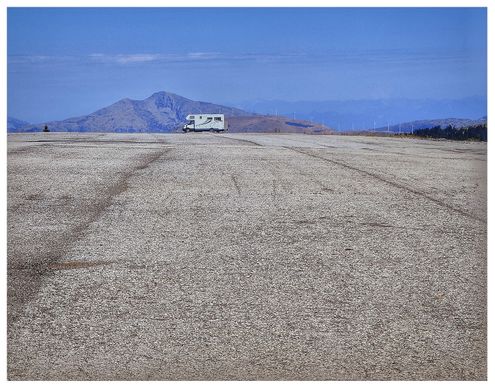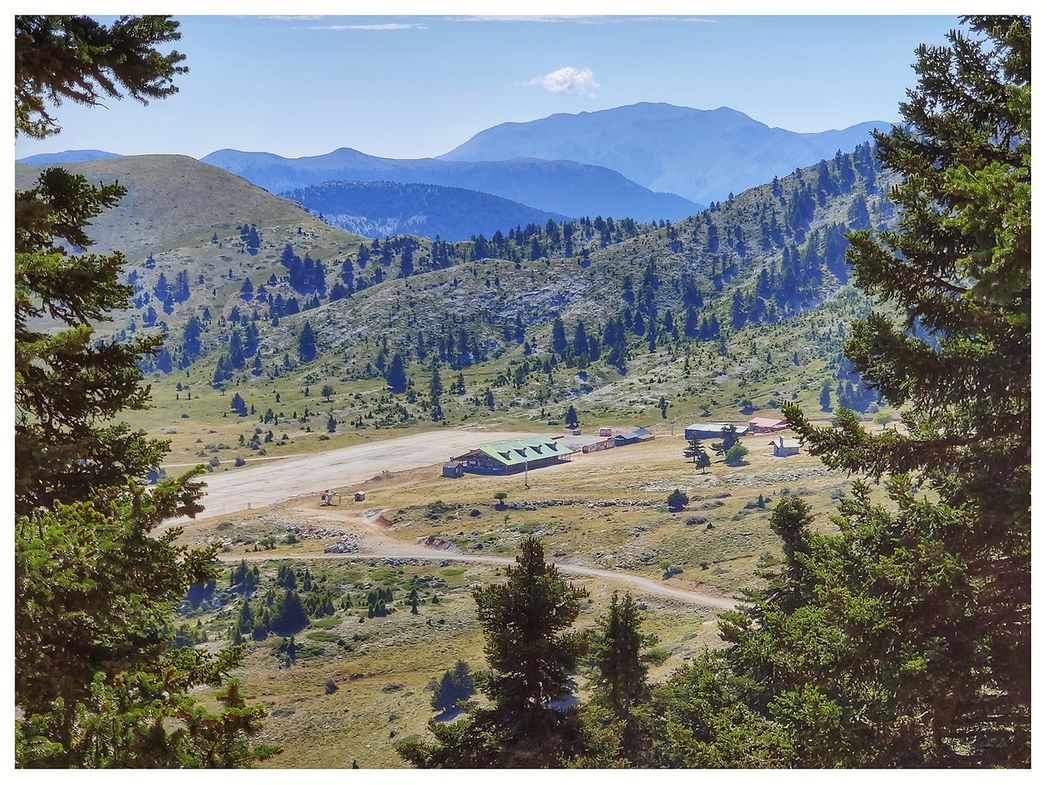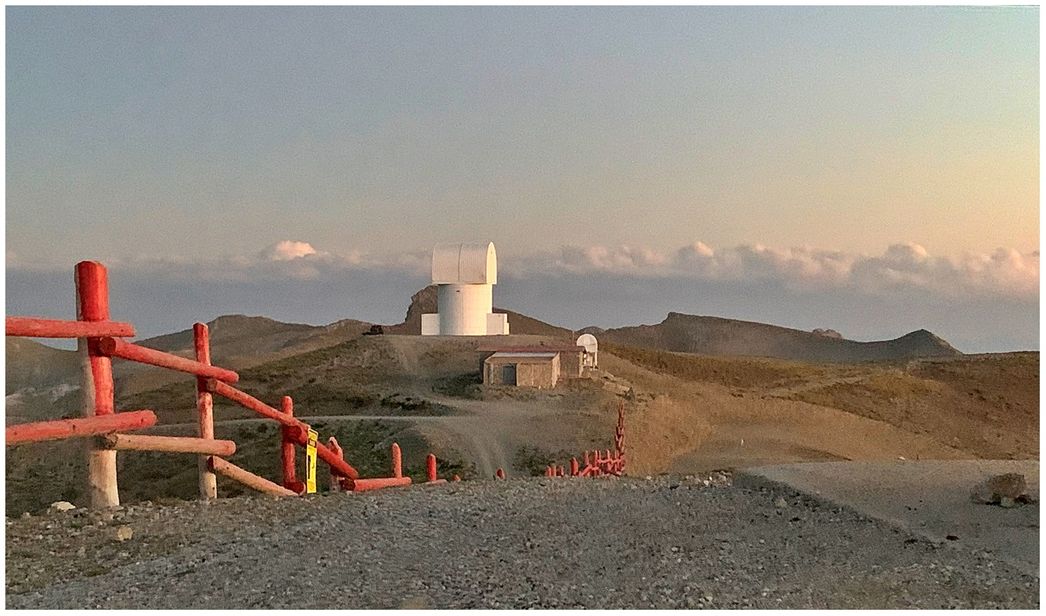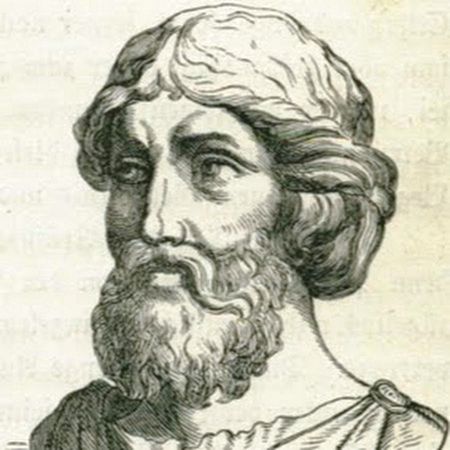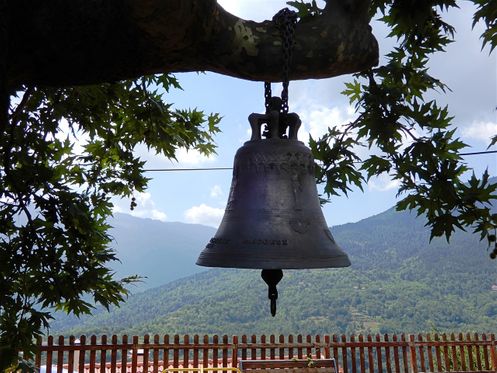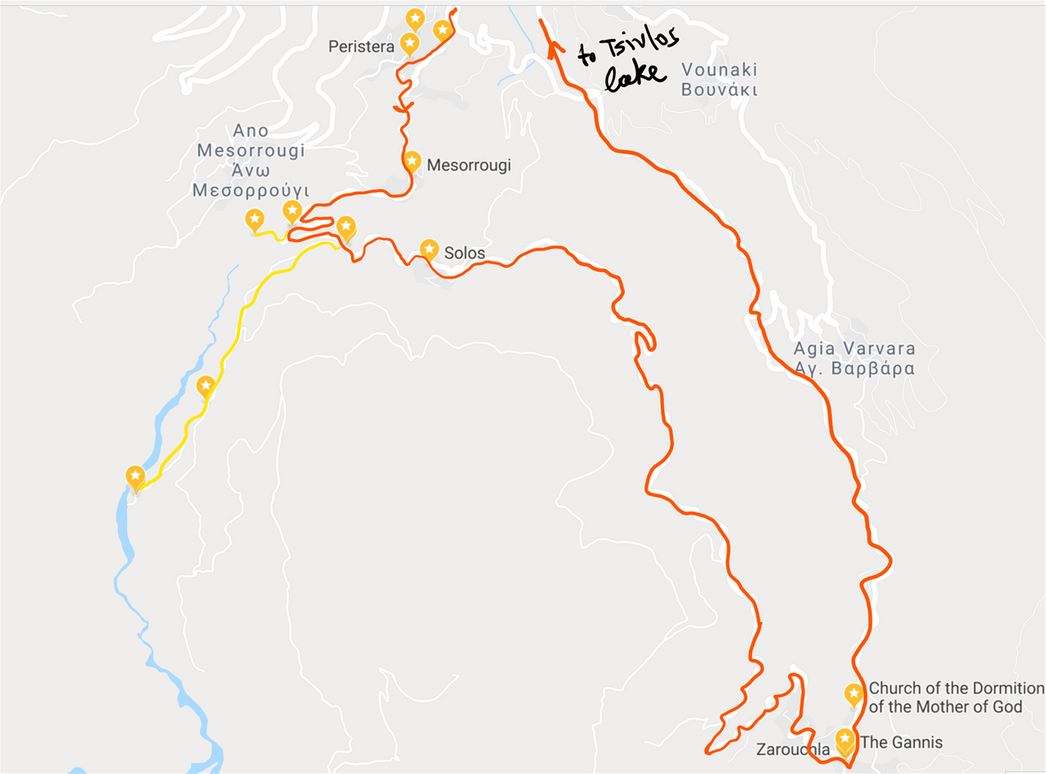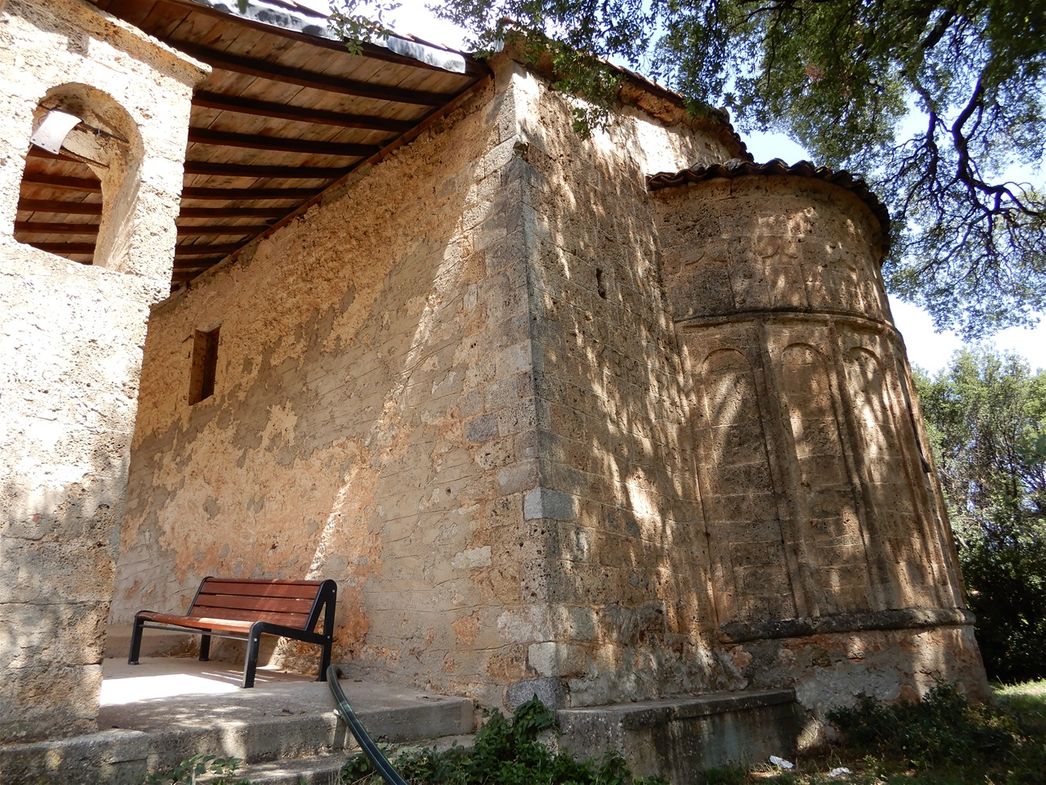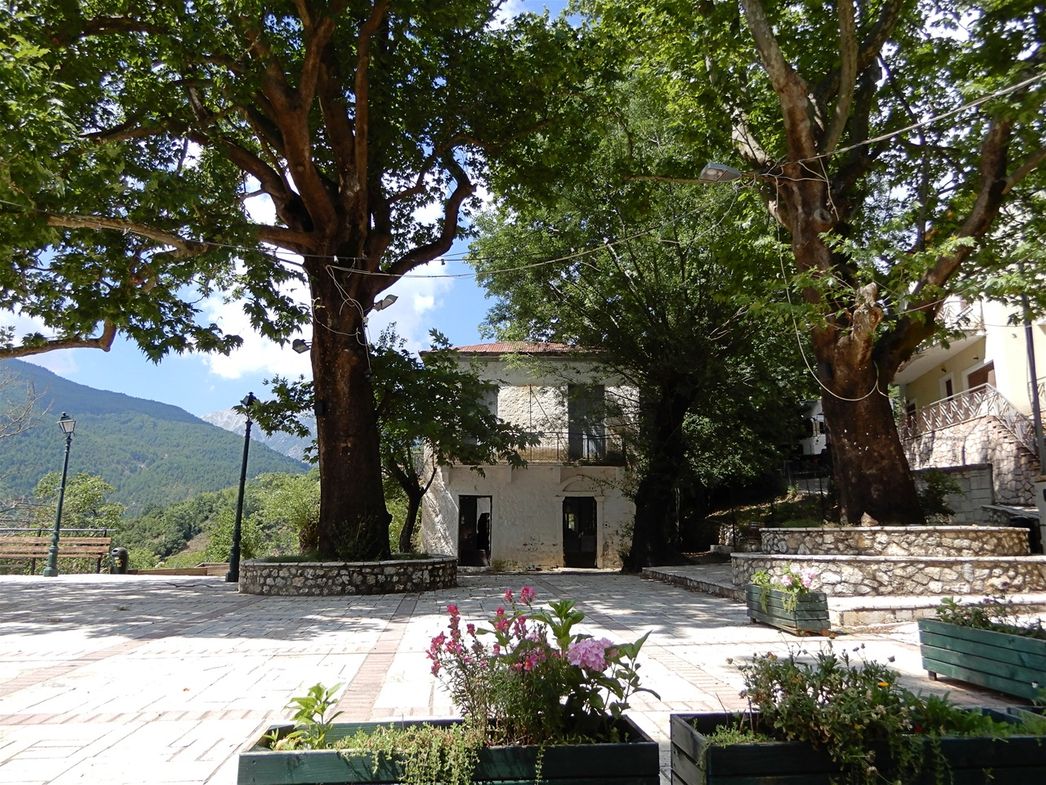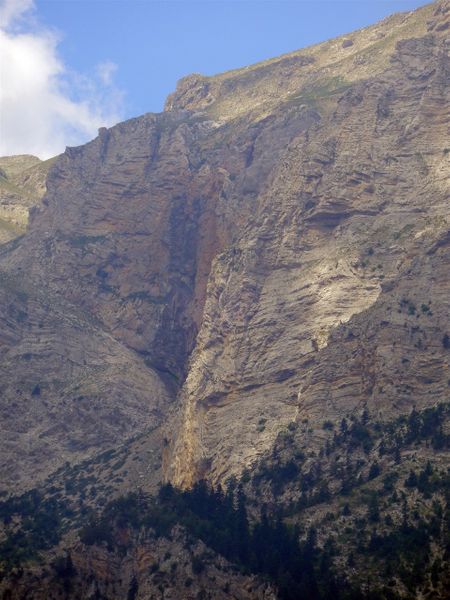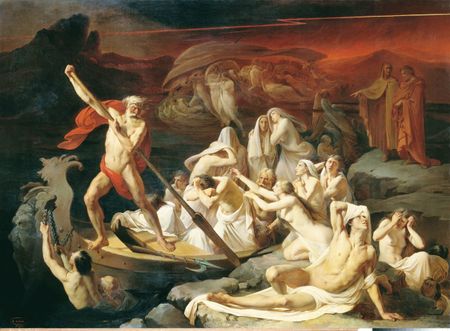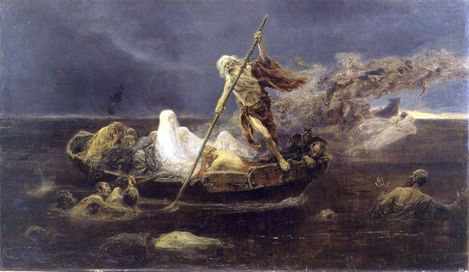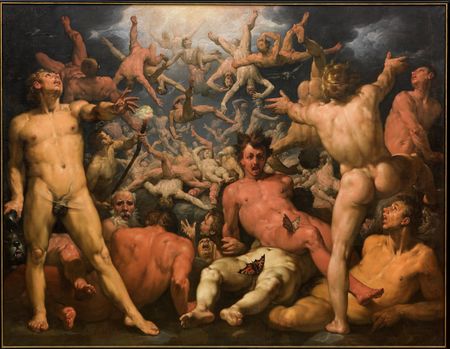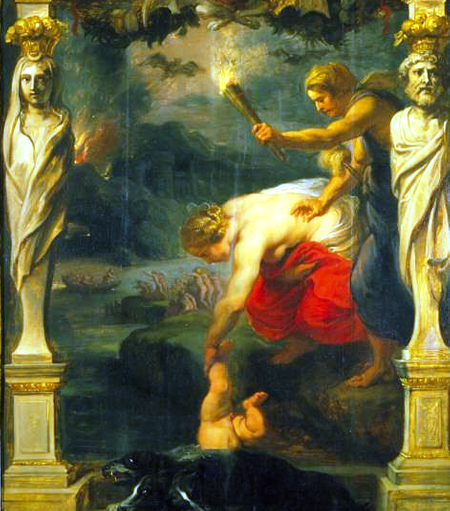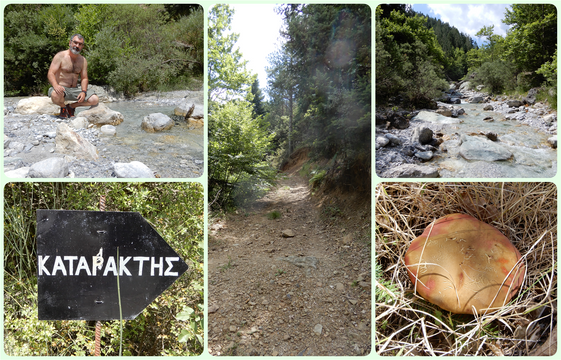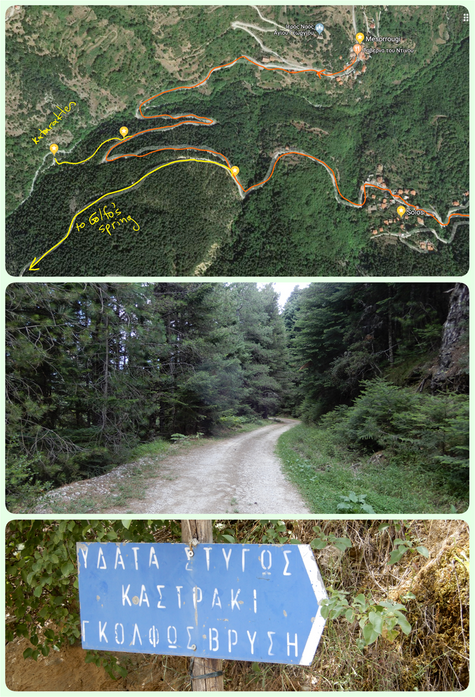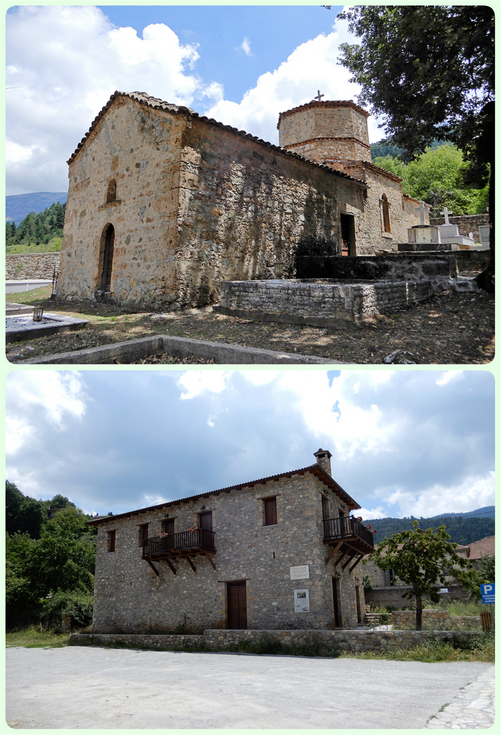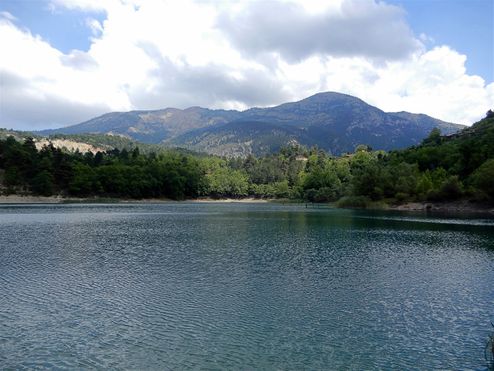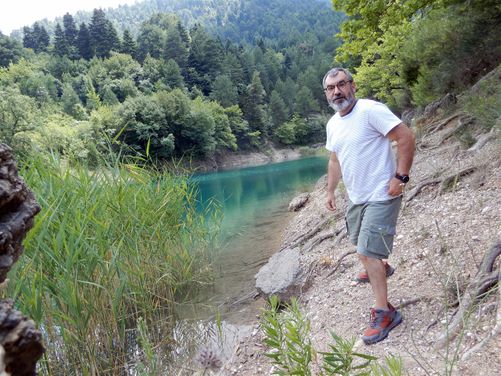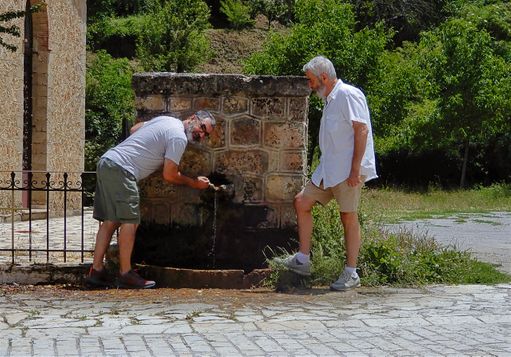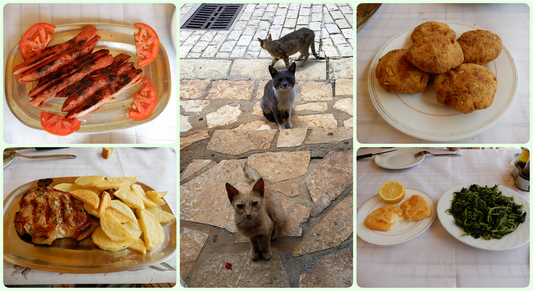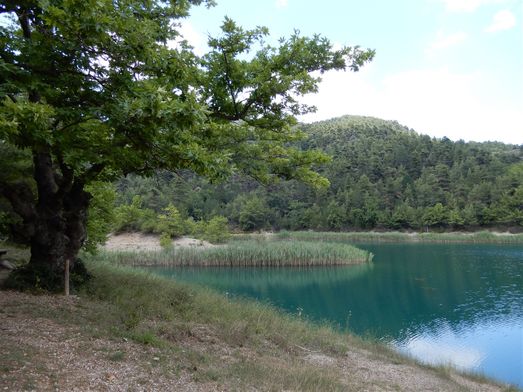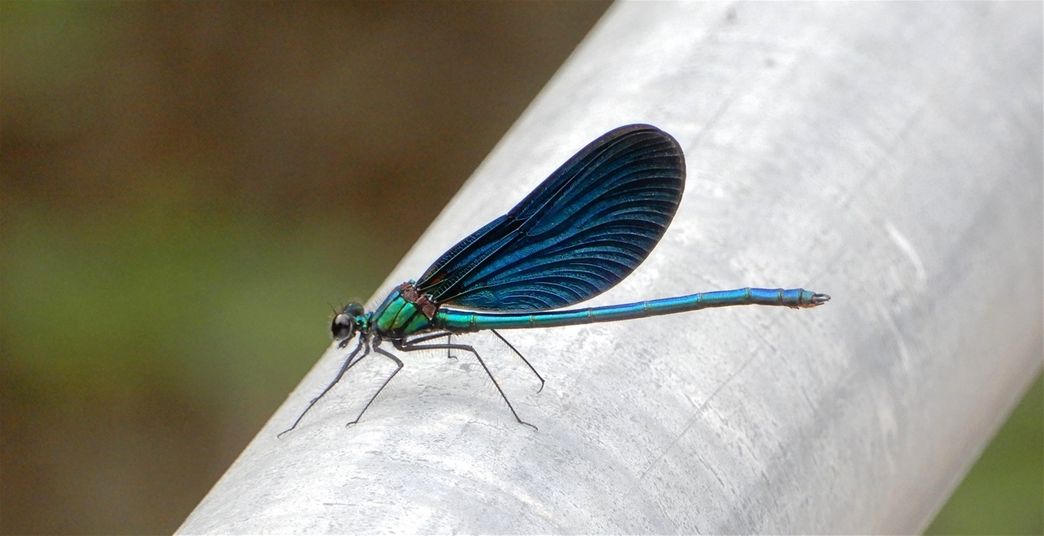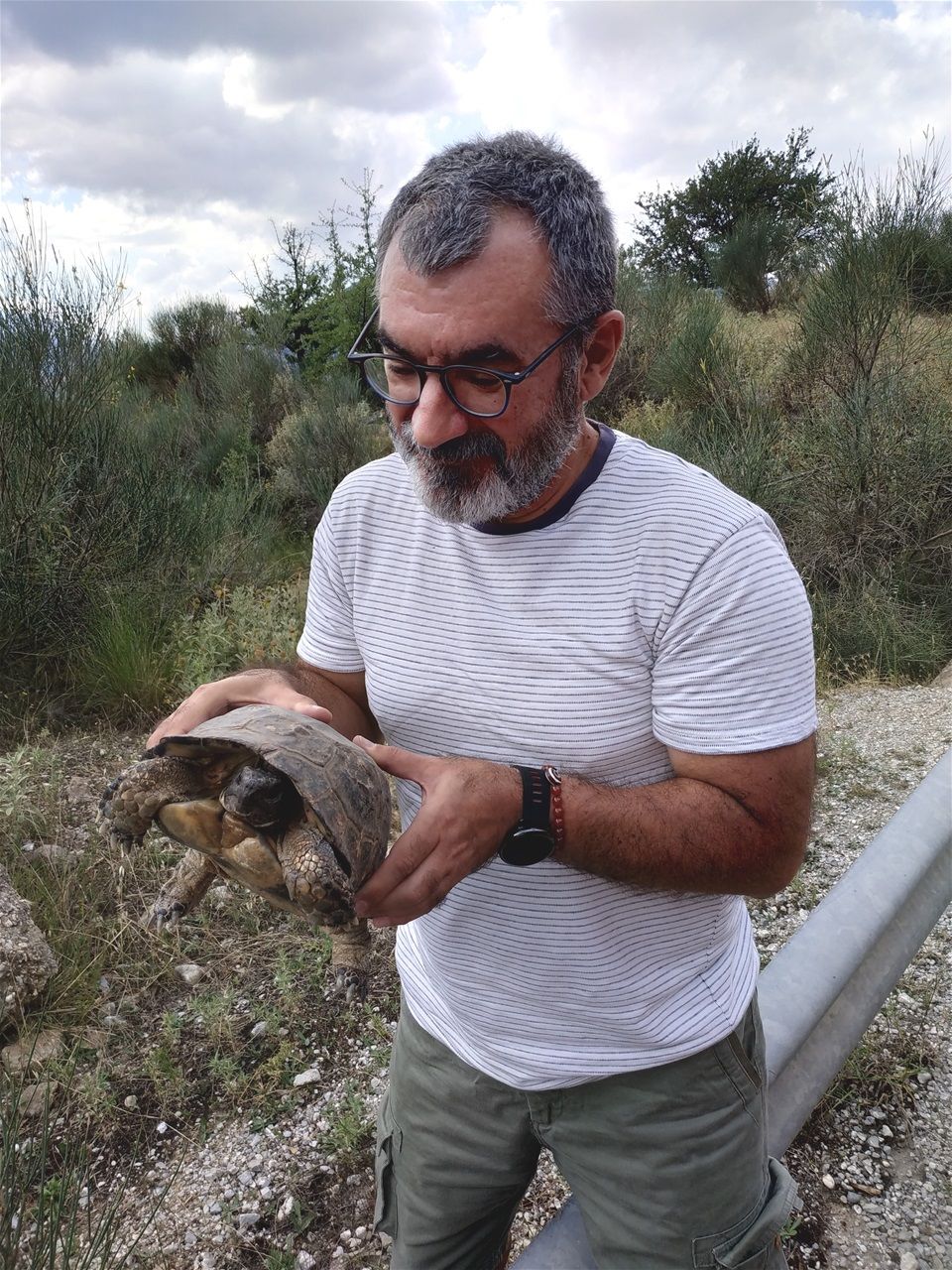Mount HELMOS
Part 2
(Lakes Cave, Planitero & beyond)
DAY 2
The 2nd day itinerary. Red line shows the main track. Orange lines show the three detours.
On the second day of my long weekend on Mount Helmos, I intended to visit Lake Caves and Planitero, so I followed the round trip on the above map.
I started my day by exiting Kalavryta from the road going to the Ski Resort (the same road that goes to the Place of Sacrifice), and continued this road for 8km till reached a sharp road fork.
The red line shows the road from Kalavryta to the Lake caves. The yellow line shows the detour to Kato Lousoi village and the Petmezaion Tower.
Petmezas Tower
One road continues towards a beautiful plateau (one must follow the signs for “Lousoi”). At the same time, the other goes somehow backward and up to the mountains and to the beautiful villages, which we colloquially call “Golfo’s Villages”. I followed the one going down to Lousoi villages. I bypassed “Ano Lousoi,” and in about 1km, I turned left towards “Kato Lousoi” (Κάτω Λουσοί) village and followed the signs for “Tower House of Petmezas” (Πύργος Πετμεζαίων - Petmezaion Tower).
“Tower House of Petmezas” (Petmezaion Tower).
Vigla is one of the elements we often find in the towers of mountainous Gortynia, Mani, and other places of the Peloponnese. Over the years, repairs and alterations have changed the look of the building but did not substantially alter its character. Until recently, the tower belonged to the Vice Admiral and, for many years, President of the Greek Red Cross, Golino Petmeza, and now belongs to his son, Antonios Petmezas. The men of the Petmesas family during the Revolution played a leading role.
Back to the main road, and after some meters, I turned right (following the signpost for Ancient Lousoi) towards the heart of the plateau to visit the site of Ancient Lousoi and the Temple of Artemis Imerasias.
The road coming down from Chelmos to a beautiful plateau. Lousoi villages seen on the left.
This historic tower, built on a hill at a strategic point, was the base of the Petmezas family and the center of resistance against the Turkish occupation both in the pre-revolutionary years and during the Revolution. It is one of the oldest towers of the mountainous Peloponnese, dating back to the 17th century. Today it is preserved in excellent condition and remains a landmark and historical memory of the struggles for the freedom of the Greek people. The tower was not standing alone in the past, but it was part of a complex that included auxiliary buildings, gardens, and walls, which were demolished. Its architecture is a unique example of the folk architecture of the mountainous Peloponnese.
The tower is an elaborate edifice of local gray stone and well-worked details. At the northeastern corner of the building, there is a cylindrical tower, while at the diagonal opposite southwest corner, the second smaller turret (watchtower or "vigla") is protruding.
Me at the yard of the tower.
The detour (yellow line) to Ancient Lousoi.
Temple of Artemis Imerasias
The position of the Temple of Artemis Imerasias.
The Doric temple of Artemis Imeras or Imerasias (of Artemis who relaxes and calms down) was built at the beginning of the 3rd century BC, and it was somehow the center for the “healing of the mental illnesses” or what would call today "psychiatry".
Lake Caves
I drove back to the main road and continued for 5km to the south to visit Lake Caves (Kastria Caves) - Σπήλαιο Λιμνών. The caves are located by the main road and are well signed.
There are two big parking lots on site to leave your car. You can buy tickets for a cave tour at the café-bar and then proceed to the cave entrance, where young and gentle guides take you for a 20min time in the caves. You cannot visit the caves alone; photography is prohibited …but it is not written on stone. Take a jacket with you, as the temperature in the caves is around 15C all year round. The humidity is also very high.
Tickets for Adults: 9,00 € (reduced 4,50 €).
Oh yes! The healing of mental illnesses....
The entrance to the Caves (top left). The cafe and ticket office (top right). The landscape on the way to the caves (middle left). The rest three pictures show the interior of the caves.
The caves have a very informative site: http://www.kastriacave.gr/
Planitero
After having some icecream at the cafe outside the caves trying to warm up a bit 😎... I continued on the main road, bypassed the village which gave its name to the caves (Kastria village), and after a total of 8km, I turned left towards Planitero (Πλανητέρο). There are many (a real mess, I would rather say) signposts at this turn, revealing that the place is popular. The distance from the main road to the Planitero is only 2,5km.
The temple of Artemis Imerasias (what has left of it) is built on a hillside with nice views of the plateau and the mountains surrounding it. The ancient town was built on the hill, and several excavation sites around Lousiko Village were brought into light houses and public buildings. There is not much to see today from this important ancient city, but the scenery is worth the detour from the main road.
From the Caves to Planitero. Red line shows the 2.5km detour from the main road.
Planitero is a picturesque village located at an altitude of 700 meters. The landscape is breathtaking: a dense plane-tree forest of exceptional beauty. The location is also known for the trout fisheries.
There are a couple of traditional taverns here, where visitors can taste delicious local dishes and trout. After lunch, I recommend the visitor wander the plane-tree forest and walk along streams of cold and super-clean waters. But, do not buy traditional products from the street vendors because they are overpriced.
The most astonishing thing of the place here is that you can see waters spring out in what seems to be the middle of nowhere, either it is a rock or the flat ground. It is here where Aronios River springs.
Planitero, the forest and "Tavern Piges".
Smoked trout (top left), greek salad (bottom left) and grilled trout (right top/bottom).
We had lunch at “Piges Tavern” (Ταβέρνα Πηγές), which is located next to a little bridge and a stream. You can see the waters run just 1m away from your table. This scenery is very rewarding, but wait until your trout arrives at your table. As a starter, besides Greek salad, we had smoked trout in lemon and olive oil mixture (λαδολέμονο), sprinkled with fresh parsley and onions. The best trout I ever had… EVER. And then came the main course: fresh trout roasted on charcoal. Certainly, that was the culinary highlight of my visit to the area and a must for every visitor!
Kleitoria
I started my way back to Kalavryta via Kleitoria. Kleitoria is a nice village with well-preserved stone houses. The best spot to stop for coffee (after the hearty lunch you had at Planitero, you need it) is its main square. We enjoyed some Greek coffee at the “Mouries” (Οι Μουριές) tavern under the thick shade of mulberry trees.
Kleitoria. "Mouries" tavern on the right and the main square in the middle.
A typical old stone house in Kleitoria.
At the beginning of the road to Kertezi village, a sign announces the "Shepherd's Festival".
Kertezi
The landscape on the way back to Kalavryta is stunning: high mountains, deep gorges, and small villages.
The last detour worth taking is the 6km road leading to Kertezi village (Κέρτεζι). The main reason to do this is to enjoy the beautiful route along a river. The village is built at the bottom of a narrow passage among high mountains and rock cliffs. The village was getting ready to celebrate the annual "Shepherd's Festival" that evening of our visit. Unfortunately, we were exhausted to stay up late and attend the celebrations. Who knows? Maybe next year.
The detour to Kertezi.
Day 3
(at Golfo's Villages & Lake Tsivlos)
On the 3rd day of my trip, I visited the beautiful cluster of villages located at the southeastern slopes of Helmos: Mesorrougi, Solos, Peristera, and Zarouchla, which, in the popular tradition, it has prevailed to be called "Golfo's Villages". Here, in this area, was supposed to live the heroine of the 1893 theatrical play "Golfo," written by Spyridon Peresiadis.
From Kalavryta to Golfo's villages (red line). The yellow line shows the detour to the ski resort and the observatory.
Tassos and Golfo
The story of "Tassos and Golfo" is an old rustic legend of the Helmos area, which became widely known after the 1893 play written by Spyridon Peresiadis.
The story transferred to the big screen in 1914 with the title "Golfo" ("Γκόλφω"-directed by Konstantinos Bahatoris. Golfo is the first Greek feature film. Even today, the play is staged in theaters around Greece.
In the award-winner 1975 Greek film, directed by Theodoros Angelopoulos, "The Travelling Players" ("Ο Θίασος"), which traces the history of mid-20th-century Greece from 1939 to 1952, the troupe travels in rural Greece playing "Golfo".
Picture from the 1914 film "Golfo" (top). Spyridon Peresidis (bottom left) and poster of the play (bottom right).
The play's story goes like this: Tasos is a young shepherd in love with Golfo and intends to marry her. However, the rich shepherdess Stavroula, with her father's help, manages to lure him with the promise of a dowry. Eventually, he realizes his mistake and returns to Golfo, but she has poisoned herself. Driven by guilt, Tasos commits suicide.
Pictures from the 1955 Greek film "Golfo" directed by Orestis Laskos.
The story is so popular that most people do not know that the people in the drama are fictitious and believe they are real. Local authorities take advantage of this; several villages claim to be Golfo’s village. They even have built a fountain from where Golfo is supposed to go and bring water home.
Helmos Ski Resort &Observatory
The parking lot of the Ski Resort.
I left Kalavryta and followed the road to the Ski Resort (the same route to the Place of Sacrifice). After 8km, there is a sharp road fork. One road goes to Lakes Cave (the trip I described in the previous chapter), and the other goes backward and up to the mountains and the ski resort. There are road signs.
When I visited (during summer), the ski resort was closed (of course). But, even during summer, it is worth visiting as the scenery is rewarding and driving alone in the huge parking lot makes one feel like going on a racing court or an airport apron! The peaks of Helmos at this altitude are bare.
The ski resort parking lot.
By the main parking area (while facing the main building, on the right hand) starts a dirty road (it is easy to drive if you have a pickup truck or a big 4x4 vehicle, but it is better not to try driving this road on a good city car) that goes up to a mountain shelter and the Helmos Observatory (National Observatory of Athens), located at an altitude of 2340m. The area where the observatory is built is one of the darkest areas in Europe, thus perfect for sky observations. The telescope of the facilities has the name of the great ancient Greek astronomer Aristarchus. http://helmos.astro.noa.gr/
The ski resort main facilities and the parking lot seen from the road up to the refuge.
The "Aristarchos" telescope facilities (the photo was taken by my good friend George Papachristopoulos).
Aristarchos (Αρίσταρχος) (310 BC - 230 BC) was a mathematician, philosopher and astronomer. He was born on the island of Samos. He was the first to propose a heliocentric solar system model, a hypothesis violently rejected by colleagues and fellow citizens since it was displacing the Earth from the center of the universe (geocentric model). The latter was largely affected by the ideas of Aristotle and Ptolemy. Aristarchus' model was put aside for almost 18 centuries for many reasons when it was finally revived, developed, and fully confirmed by Copernicus and Brahe. Aristarchus was a copious writer, but only one of his works has survived, based on a geocentric view of the Cosmos. The title of his treatise was "On the Sizes and Distances of the Sun and the Moon".
Aristarchos of Samos.
Although well paved, the road that leads through the Golfo’s villages has lots of sharp turns. There is not much to do in the villages, as there are no restaurants or cafes. Nevertheless, nature here is at its best, and the place is dotted with small churches made of limestone, which are lit by the afternoon sun and resemble golden sculptures. Drive slowly thru the villages and the woods and occasionally stop to admire the bare peaks of Helmos and the black trace the water of Styx or Mavroneri (black water) has left on the mountain.
A church bell somewhere in Golfo's villages.
The route through Golfo's villages (red line). Yellow lines show the detours.
A little church in Peristera Village.
The main square of Peristera village.
Styx
Up there on the peaks of Helmos, a steep shady rock springs a source that the ancient Greeks called Styx Waters and today is called Mavroneri (Μαυρονέρι=black water) due to its dark color. The waters of the spring form a waterfall, then pass underground and come up again, at the lower grounds of the same area, to unite with the river Krathis.
According to the myth, the dark appearance of the waters has to do with the goddess Demeter. When she transformed into a mare (to escape Poseidon, who had fallen in love with her and was after her), she looked at her reflection in the waters here; the image displeased her, and she straightway made the river black so that it not able to reflect anything anymore.
The black traces of Styx waterfall (spring) on the rock.
Alexander Dmitrievich Litovchenko( 1835 - 1890). Charon carries souls across the river Styx.
River Styx By Michael Dawson.
Cornelis Cornelisz van Haarlem, The Fall of the Titans (1596-98).
The deities of the Greek pantheon swore all their oaths upon the river Styx because, according to mythology, Styx, the goddess of the river, sided with Zeus during the Titan War. After the war, Zeus declared that every oath must be sworn upon her. According to Hesiod, when two gods were quarreling with each other, and Zeus could not tell who was telling the truth and who was not, he made the gods swear in front of the water brought from Styx. The perjurer was paralyzed and became dumb and breathless. He or she would remain in this state for a whole year and be mortal. Even after this yearlong coma, the perjurer would be barred from the councils and the symposia of the gods for another nine years. For this reason, the area's people would also come to Mavroneri and take an oath here.
According to some versions of the myth, Styx had miraculous powers and could make someone invulnerable. According to tradition, Achilles was dipped in the river waters by his mother, Thetis, during his childhood, acquiring invulnerability, except for his heel, by which his mother held him.
Dante put Phlegyas as a ferryman over the Styx and made it the fifth circle of Hell, where the wrathful and sullen are punished by being drowned in the muddy waters for eternity, with the wrathful fighting each other. In ancient times some believed that placing a coin (Charon's obol) in the mouth of the dead or the deceased would pay the toll for the ferry to cross the river, which would lead one to the entrance of the underworld. If someone could not bear the fee, they would never be able to cross the river. The relatives performed this ritual.
In Greek mythology, Styx (Στύξ) is a deity and a river that forms the boundary between Earth and the Underworld, often called "Hades". The river Styx and the other four rivers supposedly converge at the center of the underworld on a great marsh, sometimes called the Styx. Styx was primarily a feature in the afterworld of classical Greek mythology, similar to the Christian area of Hell in texts such as Dante's "The Divine Comedy". The ferryman Charon often is described as having transported the souls of the newly dead across this river into the underworld.
Ancient Greek and Roman historians refer that Alexander the Great died when he was poisoned by drinking water of Styx, which had been secretly put into the wine Iollas, his cupbearer. Antipatros organized the conspiracy, while Aristotle may have provided contaminated water.
Rubens. Αchilles dipped into river Styx by his mother Thetis.
Golfo's villages
On the way from Mesorougi to Solos, one has the best view of Mavroneri. Midway between the two villages, there is an old road sign with “ΚΑΤΑΡΑΚΤΗΣ” (cascade) written on it. Leave the car there and take the path to the right. After about 10min walking, you arrive at Krathis River (more like a stream than a river), into which the waters of Mavroneri flow. The waters of Krathis are light blue due to the limestone rock bed. The place is empty of people, so you can take off your clothes and enjoy the super-cold waters. Do not expect a real swim, as the waters are not deep enough, but you can still enjoy the river.
The waters of Krathis river. At the sign (bottom left), take the trail (middle) that leads down to the river (top).
The two detours: to Kataraktis & Golfo's Fountain (top). The road leading to Golfo's Fountain (middle). The sign to Golfo's Fountain on the main road (bottom).
Zarouchla (Ζαρούχλα) is the furthermost village of the cluster, 7km south of Solos. Zarouchla is the biggest of all villages in the area and where there is a chance to have some good food or a drink. The village boasts some beautifully restored stone mansions, limestone old churches, some of which date back to Byzantine times, and what is more important: several taverns and cafés!
The most “Greek” moment was when we asked for water: the lady took a jar and filled it up from the public spring by the road next to our table. Things like this make me wonder what a special people we are, the Greeks. We may argue all the time about anything and complain about our life as we seem to be never satisfied, etc., etc.,... but then there is something so small, like this lady’s gesture, that makes you forget all the bad things feel happy you live in such a beautiful country.
“Coffee Market”, also on the main road serves refreshment, cakes and coffee at a beautiful yard.
Tsivlos lake.
I continued on the road that follows the east shore of the lake all the way to the northwest, where “Paradeisos Tavern” (Παράδεισος) is. On the eastern circumference road of the lake there are two dirt roads that take you down to the shores of the lake, there are picnic facilities there. Paradeisos is built at the most beautiful part of the lake, among pine trees.
Me by the lake.
Back to the main road. Less than a kilometer down the road, there is a sign and a sharp turn right. The sign says “ΥΔΑΤΑ ΣΤΥΓΩΣ, ΚΑΣΤΡΑΚΙ, ΓΚΟΛΦΩΣ ΒΡΥΣΗ” (=Styx waters, Kastraki, Golfo’s Fountain). Visiting the “Golfo’s Fountain” is worth taking this detour. The road is wide enough, but sharp rocks have emerged due to erosion at several points, making it precarious for the car tires. Drive carefully and remember that take the right leg at every road fork you encounter. With some patience and after about 2-3 km, you are supposed to see Krathis River, which stands at Golfo’s Fountain. I say “supposed” because I did not follow the last third part of the road. The reason for that is that there was a misleading paper sign at that point, and I could not decide which way to take it, and also, I was not sure this was the right road to the fountain anyway. As I wrote earlier, Golfo did not exist, so there should be no fountain where she used to go and bring water. This modern monument is just a tourist attraction and one thing you must visit while in the area. It is Golfo’s fountain, after all!!!!
Public fountains are abundant in the area.
We parked our car on the main road next to the “Church of the Transfiguration of Our Savior” and the “Tower of Charalampis Sotiris”. We walked around and had some cold water from the fountain in front of the church before heading to “Giannis” Tavern (Ο Γιάννης). This traditional tavern has a big room inside (during winter, it gets freezing here) and a couple of tables outside by the road. We sat outside and ordered saganaki (of course) and green salad (I do not like the translation “greens”, which is often used and it is the exact translation from the Greek “χόρτα”, as it doesn’t mean anything in English) with lots of lemon and olive oil, chickpea balls (as opposed to meatballs), porkchop (the greek way, which means the best porkchop you ever had) with French fries and the famous local sausages. The most delicious grilled sausages I had for ages!!! The lady who served us was very kind, chasing stray cats away from us all the time, believing they bothered us!
The Church of the Dormition of the Mother of God is located inside the cemetary (top). The “Tower of Charalampis Sotiris” (bottom).
At the Giannis Tavern.
Tsivlos Lake
I left the best attraction for the afternoon of my third day in the area: Tsivlos Lake (Λίμνη Τσιβλού). I exited Zarouchla from the north and took the road to the right, towards the village of Agia Varvara. After driving on this road for 14 km (this road goes to Akrata, which is a town by the sea on the Gulf of Corinth), I turned left at the sign “Λίμνη Τσιβλού». In less than 2 km, there is a great bellavista of the lake. This is probably the best view of the lake.
Tsivlos Lake.
The lake created on March 24, 1913, when the riverbed of Krathis River blocked by a large landslide. The lake has an area of about 83 acres and a depth of about 80 meters. The Lake took its name from the village of Tsivlos, which was partially damaged after the landslide. The locals call the name Mavrolimni (=black lake) for the harm it caused and not because of its color which is a bright blue.
A beautiful blue dragonfly.
On my way back to Kalavryta I found this little chap in the middle of the road and I decided to give him a second chance.... :o)

